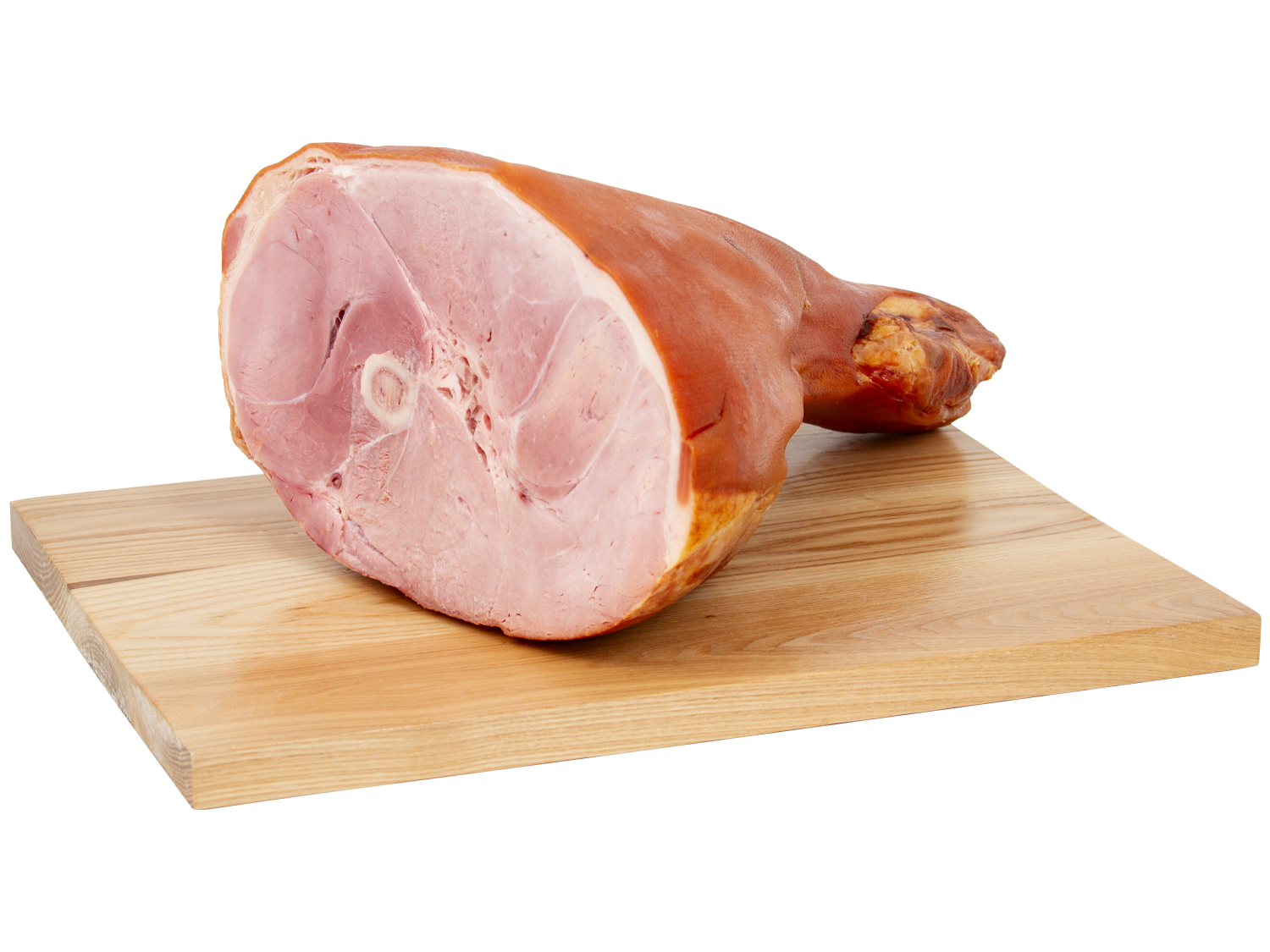The whole muscle pork leg used to make Charter Reserve® Ham Off the Bone is smoked and hand-crafted to make a premium deli meat. The meat is cooked in its own natural juices. This tender, precooked, delicious ham is great for a variety of applications – from salads to sandwiches.
Talk to our product experts to find out how Charter Reserve® can provide you with high-quality ham off the bone that is already cooked and packed in bulk.
Cured with: Water, contains less than 2% salt, potassium lactate. sugar, sodium phosphate, sodium diacetate, sodium erythorbate, sodium nitrite.
For meat aficionados, few things beat the rich, savory flavor of a perfectly cooked ham. And when it comes to ham preparations, ham off the bone reigns supreme for many. But what exactly is ham off the bone? As a food writer and recipe developer, I’ve set out to provide a comprehensive guide to this beloved meat.
In this article, we’ll cover everything you need to know about ham off the bone. We’ll explore how it’s made, its flavor profile, nutritional content, and how to cook it to juicy perfection. Whether you’re a seasoned ham fan or new to its wonders, let’s get ready to master ham off the bone!
What Is Ham Off the Bone?
Ham off the bone starts just as you’d expect – with a whole, bone-in leg of pork. To transform it into the product we know and love the leg is first cured. This involves rubbing salt spices, sugar, and preservatives over the meat.
Curing imparts flavor, tenderizes the meat, and preserves it for longer storage. The pork leg is then slow-smoked over fragrant wood chips. Smoking infuses it with that iconic smoky ham essence. Finally, the bone is removed, resulting in boneless ham ready for cooking and eating.
So in essence, ham off the bone is simply a whole ham leg that has been cured, smoked, and deboned before being sliced and packaged for consumers. It retains the same delicious flavor as bone-in ham, just without the nuisance of navigating around the bone.
Flavor Profile of Ham Off the Bone
When you take a bite of ham off the bone the flavors that should shine through include
-
Smoky – The smoking process gives ham off the bone a distinctive smoky flavor. This can range from mellow to intense depending on length of smoking.
-
Salty – The salt used in curing penetrates the meat, leaving it pleasantly salty.
-
Sweet – Sugars in the cure balance the salt, giving ham off the bone a touch of sweetness.
-
Savory – Ham’s rich, meaty flavor shines when cured and smoked properly.
-
Umami – Compounds like glutamates give ham its irresistible umami quality.
High-quality ham off the bone often has hints of other spices like black pepper, coriander, garlic, or juniper depending on the cure used. When shopping, look for ham with a well-balanced flavor profile.
Nutritional Profile of Ham Off the Bone
Ham off the bone provides a range of important nutrients:
-
Protein – High quality, satisfying protein. A 3oz serving contains about 19g.
-
Vitamin B6 & B12 – These vitamins help convert food into energy and maintain healthy blood cells.
-
** Selenium** – An essential antioxidant mineral.
-
Phosphorus – Supports bone health.
-
Zinc – Boosts immunity and wound healing.
However, there are some drawbacks:
-
Sodium – Ham’s high sodium levels may be concerning for some. Opt for lower-sodium products.
-
Nitrates/Nitrites – Curing agents that may have health risks when consumed in excess.
Overall, ham off the bone can be enjoyed as part of a balanced diet when consumed in moderation. Focus on quality and portion size.
How to Cook Ham Off the Bone
Now, let’s get to the best part – cooking and eating! Here are foolproof methods for cooking ham off the bone:
-
Baking – Bake in a 350°F oven until heated through, about 10-15 minutes per pound. Glaze it if desired.
-
Pan-frying – Fry slices over medium heat until lightly crispy on both sides.
-
Broiling – Broil 4-5 inches from heat, flipping once, until browned.
-
Grilling – Grill over medium heat for about 5 minutes per side. Baste with glaze.
-
Soups & Stews – Dice ham off the bone to add hearty chunks to soups and stews.
-
Casseroles & Bakes – Mix diced ham into recipes like scalloped potatoes, egg bakes, or mac and cheese.
When reheating cooked ham, opt for gentle methods like baking or microwaving with a splash of liquid to prevent drying out. With its mild flavor, ham off the bone is also delicious cold in sandwiches, salads, and antipasto platters.
And don’t discard the bone after removing it! Use it to make smoky ham stock.
Tips for Buying & Storing Ham Off the Bone
When shopping for ham off the bone, keep these tips in mind:
-
Seek out reputable brands using quality pork and curing methods. This affects flavor.
-
Opt for uncured or naturally cured ham to limit nitrates/nitrites.
-
Check the ingredients list and nutrition facts. Avoid lots of additives or excess sodium.
-
Look for a 3-4 week shelf life from the pack date.
-
Store in the coldest part of the fridge for no more than 7 days. Freeze for longer storage.

Quality Made from whole muscle, high quality pork

How to Carve a Whole Bone-In Ham (For Beginners)
FAQ
Is ham off the bone better?
What does “off the bone ham” mean?
How is ham off the bone made?
Is off the bone ham processed meat?
